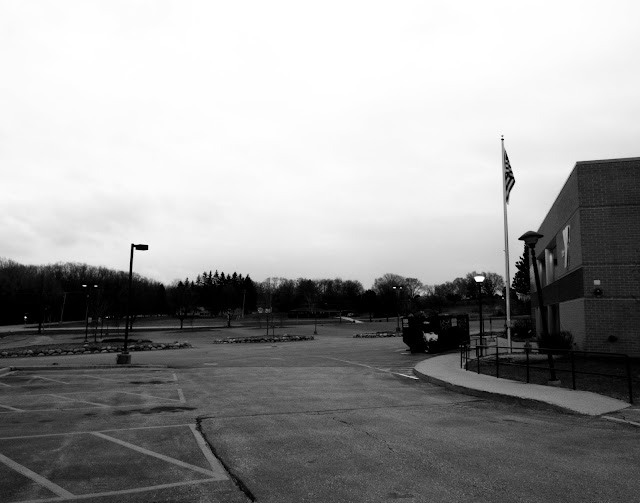Project 1 Post
Good evening,
At this point, COVID-19 is a name that brings up exhaustion, fear, frustration, and uncertainty. It has also become unavoidable.
So, rather than pretend it isn't happening, as much as I would like to, I figure I can make art out of this. Not only do I have a unique opportunity to document this event, I feel I have a responsibility to do so. For the first time, I am fully cognizant of a worldwide event, and I am able to experience the universal feelings of remarkable hope and the weight of sorrow, and preserve them for the future.
As for the images, I first journeyed to my local YMCA, which feels intensely apocalyptic, with a perpetually empty parking lot, a torn up inner hallway, and vacant studios. I was able to capture a beautiful film-like double exposure effect by catching the reflections through windows and the mirrors inside the yoga studio. Also, I had no idea turkeys liked to sit in trees, but they do, as I discovered while out on a walk. They're big and oddly beautiful. One of my favorite photos from this week was of the Hometown gas station sign selling gas for $.99 a gallon, a price which my mom hasn't seen since 1988, and something I likely won't see for another 30 years. The empty tennis courts taped off give off the same vacant energy of the YMCA, making me wonder how long it will truly be before they are used again. All photos here are minimally edited, besides black and white, cropping, and minor spot treatments.
Rexer’s discussion of how the written word is more important than ever to photography got me thinking. The photos I have shot this week have meaning almost solely dependent on their date, and context sets them into their place in history. These words I am writing show my personal relationship to these images, and although I believe the hand of the artist is only a small part in its determined meaning to the world, they show my reasons for creating. As Rexer says about photographs today, “We are constantly aware of them, not to say dependent on them” (14). We are dependent on photographs most of all to illustrate events of the past and provide a moment in time to transport us back in time, and the photos I am shooting now will be able to do this in the future-an amazing concept and way of record keeping.
Throughout this pandemic, I hope to capture the evolution of life with a documentary stance. I am excited to sharpen my photojournalistic side, and challenge myself to uncover the beauty that still shines through the shadow of this pandemic and the uncertain future.
Glad you’re on the planet,
Leena











Oh my gosh I love these!! I would suggest keeping them all in black and white to add to the mysterious and photojournalism effect.
ReplyDeleteNice shots! You seem to have a good sense of composition, and personally I'm a fan of the monochrome look. I can relate to what you're saying about the feeling of responsibility to document the pandemic. Whenever I go out, I seem to have an urge to photograph all the ways COVID-19 is affecting our lives: empty parking lots, people lined up in masks staying six feet apart, notices of changed hours, closed parks etc. In my view, the best documentary photography both retains substance and meaning, while expressing it with eloquence. I think you're on a good path to doing both with these photographs, and I look forward to seeing more! My favorites are the first, second to last, and last photographs. I'm playing with the idea of experimenting with a documentary approach this term as well.
ReplyDeleteI love the reflection ones and the client with mask. The reflection ones, especially the first one, has an unreal and collage feeling. It's aesthetically pleasing and it kinda have the ability to let people staring at it(if you know what I mean). And Walmart client is a rare photo with people in it. The fact that he wears a mask and has a distance from the photographer strengthen the point you want to make, and it's more convincing(emotional relatable?) than all other pictures.
ReplyDelete